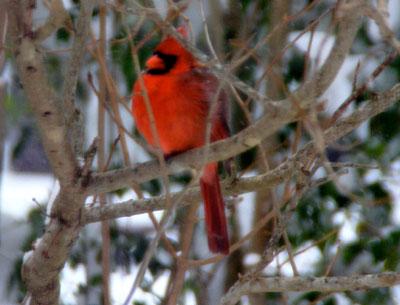Nature Notes: Travels and Travails

Only 37 days till March and the return of the ospreys and piping plovers. So far, it hasn’t been much of a winter as far as brutal weather events are concerned. The local freshwater bodies froze over, as they almost always do, while some of the salt creeks and lagoons, to wit, Upper Sag Harbor Cove and Otter Pond, were glazed over with the usual coating of thin New Year ice. The edges of the bays in the Peconics system have been white on and off with a pudding of concentrated seawater ice crystals. These manifestations of winter we witness almost every year, but we haven’t come close to having a devastating snowstorm or northeaster of the magnitude of the blizzard of 1888 or the post-Christmas storm of 2010.
Consequently, the conditions are tolerable for both the humans and the wildlife. The winter birds are fat and sassy as they challenge each other at the very large number of feeders distributed throughout the South Fork. On warm days they eschew the easy pickings and investigate the nearest fields and woodlands. Is it better to stay north with a bounteous supply of store-bought seed, or 1,000 miles south and tempt meteorological travails that often accompany such a long flight.
Each year we see more and more summer residents winter in the north, robins, catbirds, towhees, red-winged blackbirds, grackles, and great blue herons among them. As the late evolutionist George Gaylord Simpson liked to say, it’s a betting game. You’re as liable to be struck down or survive an act of God whether you go south or stay behind. If you stay behind and survive the winter, you are at a distinct advantage. You don’t have to make the arduous trip north come spring.
In the beginning, the world’s diverse biogeography was brought about by cataclysmic changes. The underlying tectonic plates broke apart, rode on top of each other, or sunk down. One way or another, many continents were sprung from one. Thus there are different freshwater lungfish species in Australia, Africa, and South America separated from each other by thousands of miles of ocean water. The sluggish lungfish is not much of a swimmer and could never undertake such a journey from one island continent to another. These different species were rent from each other by tremendous geological forces, the same ones that are moving us apart from, or closer to, each other, but in a kinder and gentler way today.
Like the lungfish, the ratites — ostriches, emus, cassowaries, and rheas — are also found on different continents. They didn’t get from one to the other by flying (they don’t know how to fly) or running. They were also passive migrators, drifters, as it were, carried along by the spreading underground plates.
It’s a very different world now. We jet set around the globe and so do the birds, fishes, marine mammals, and whales. The Galapagos finches are a very good example of how several different bird species can evolve from one. Somehow, at least one or more pairs of South American finches got to the Galapagos archipelago. They were either blown there or took off in the wrong direction. A few million years after settling, the one species had evolved into separate ones on separates isles. Some developed thick beaks for crunching seeds the way some of our finches, like the cardinal, do, while some developed thin ones for probing into crevices and holes for insects.
It’s an ongoing crapshoot. There used to be African lions in North America and Asia. Now they’re gone from here and only a few survive in southwest Asia. Otherwise, the rest are all in Africa. California condors ranged from coast to coast, now they are confined to the wild west and would have gone extinct if it were not for the fact the few surviving ones in the wild were all trapped in the latter part of the 20th century, housed in zoos such as the San Diego Zoo, and raised like chickens. Offspring released back into the wild have slowly been re-establishing and reproducing in the Grand Canyon and the Sierras. Just think, if breeding behavior weren’t instinctive and had to be taught and learned, there would be no rejuvenating wild condor population. In nature some things cannot be left to chance!
So here we are. It’s the 21st century and we are still going at it “tooth and nail.” God’s macro-organisms, the animals, plants, and insects, continue to redistribute themselves, while a few fall by the wayside each year never to return. In a way, all of nature is no different from us humans, only its laws and manners are not written in stone as ours are. There are seven billion of us Homo sapiens, or soon will be. That’s a lot of biomass to consider, much more than that of all of, say, the remaining elephants, American bison, gray wolves, and even farm-raised livestock. We are certainly the most populous biped on earth, and may well be the most populous vertebrate. No one has yet to count the number of garbage rats and house mice, to name two other vertebrate species that inhabit all of the continents and most of the islands the world over.
If we can just get through this winter, which we seem to be doing without too much fuss and ado, we might very well be able to figure it all out. And then again, we might not. Happy New Year!
Larry Penny can be reached via email at [email protected].
